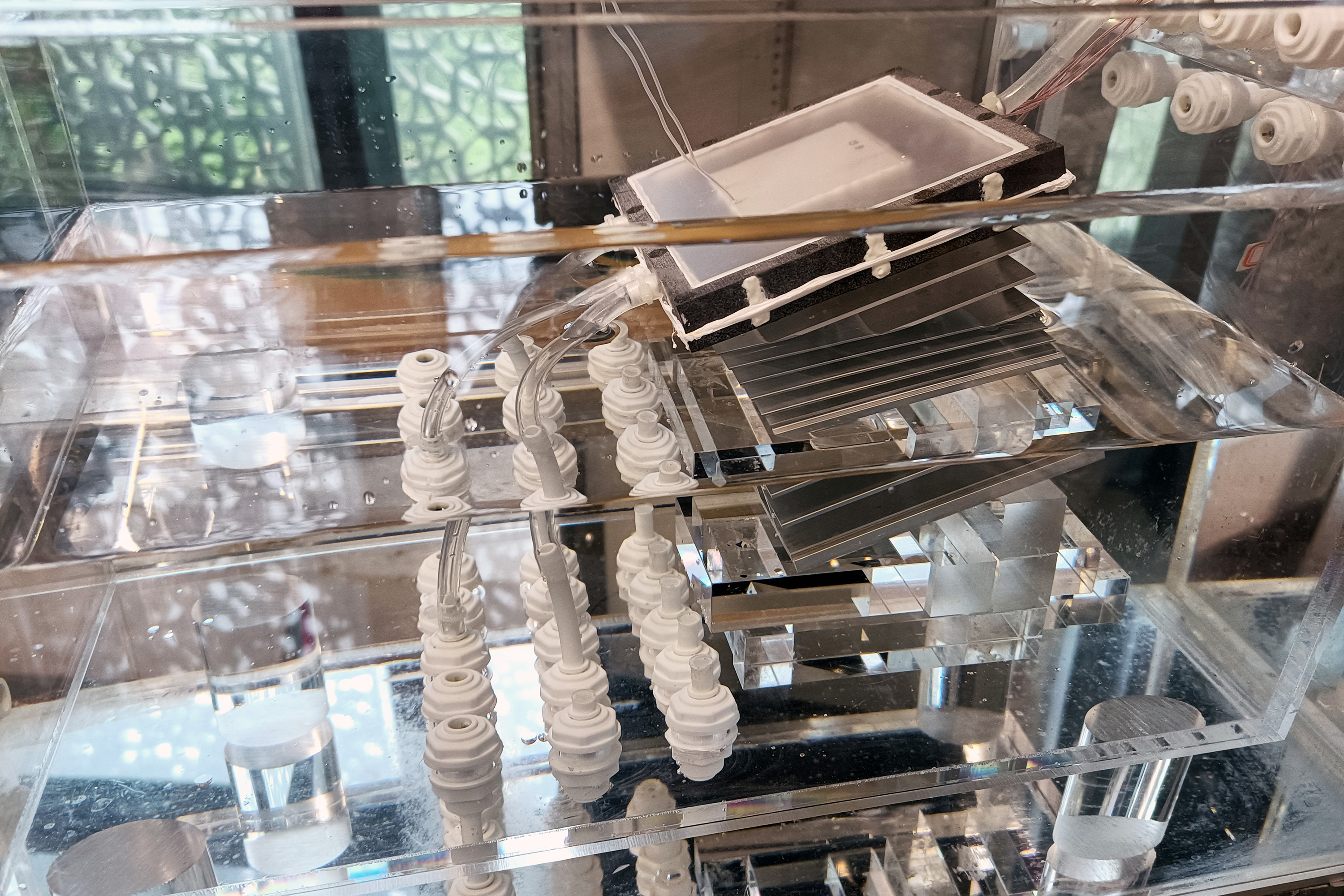Engineers at MIT and in China are aiming to turn seawater into drinking water with a completely passive device that is inspired by the ocean, and powered by the sun.
In a paper appearing today in the journal Joule, the team outlines the design for a new solar desalination system that takes in saltwater and heats it with natural sunlight.
The researchers estimate that if the system is scaled up to the size of a small suitcase, it could produce about 4 to 6 liters of drinking water per hour and last several years before requiring replacement parts. At this scale and performance, the system could produce drinking water at a rate and price that is cheaper than tap water.



Evaporate it to solid, store it if need be, or distribute it back into the sea in absorbable chunks. The water’s ending up back in the sea eventually anyway, see water cycle, so it should be zero sum, just need to avoid local overloads. Seems eminently solvable.
Depending on the desalination method, you can also harvest lithium while your at it.
Sounds so easy for you but what to do with the excess salt is the only real problem with desalination that we have for decades now. It’s not easy to solve.
That’s only the second part of the problem too. The first part is how do we stop the salt from building up inside the device?
You’ve got a point, but I’m going with ‘It’d eat into our profits and no-one’s making us’.
Eventually is an important word here. With the raise of temperature, the amount of vapor in the air raises too.
Hehe, adorable chunks…
Increasing ocean salinity is a very bad idea.
At the end of its cycle - after use and via sewage systems/rivers - that water will end back in the ocean, were the salt went.
In fact not putting the salt in the ocean and instead storing it as a solid on land would over time reduce the ocean salinity as the water would end back in the ocean but not the salt.
You’re correct, but so are they. In the long term and at a large scale, it balances out, but in the short term, there is a very real concern about local salinity levels wherever you’re reintroducing that salt to the ocean. Keeping up with the desalination plants will be a tricky business of logistics to avoid destroying the ecosystem around where you’re dumping that salt.
Adding the salt into water leaving sewage systems before it returns to the ocean might be a good idea, as you could basically kill two birds with one stone: put the salt back in the ocean while also avoiding damaging the local ecosystem with the fresh water of the sewage system reducing local salinity levels. But I’m no engineer or water treatment specialist, so I dunno if that’s at all a real solution.
You hit the nail in the head on that first part. People don’t realize exactly how long the water cycle takes to recover to natural levels when human intervention is accounted for. This is something that we are talking centuries to make happen, and that’s assuming we go at a steady rate rather than desalinate like we are trying to suck the oceans dry.
Increasing ocean salinity is a good idea. With all the ice caps melting, salinity is going further down. The salt makes the water denser, and that helps regulate temperatures. Also, the salinity differences between the poles and equator create a general current that cycles the water.
Plus, removing the salt and eventually returning the water is bad for ocean life. Their bodies need the salt.
You’re removing salt and water. So you are increasing salinity when returning it to the ocean.
This isn’t guesswork.
The water too ends up back in the ocean at the end of its cycle (same as what happens with water evaporated from the ocean which ends up raining on land) after having been used.
What that paper you linked looks into (and indeed it is important) are the local effects of constantly releasing the brine in an area, since it locally increases the salinity of the water.
So yeah, it’s a valid problem, but not a “we can’t put the salt back in the ocean” (in fact we have do it, to otherwise over time the salinity of the ocean will decrease as the water gets returned to the ocean but in that scenario the salt would not) but rather a “we can’t just have some outlets discharging brine always in the same space” problem.
It’s a “polution with brine water” problem rather than a “salinity of the ocean” one.
The water does get back into the ocean sooner or later, at least most of the time, see - rivers
Someone doesn’t understand what zero sum means